Bermuda Animals & Wildlife
While Bermuda isn't known for its wildlife, there are some interesting animals that you can see here. And some are endemic which means that Bermuda is the only place in the world where they can be found. The first animals that were noticed in the island were the pigs, also known as hogs. In the 1500s, the Spanish mariners left them to breed in the island so that they could serve as food for the passing ships.
These hogs turned out to be of national importance by early 1600s when coins were made with impressions of hogs. They were called Hog Penny. However today there is no trace of the original hogs or the pigs. The ones that can be seen in Bermuda were later imported or have been born out of the imported pigs.
Bermuda Animals of Endemic Species
Animals including fishes and birds belonging to Endemic species are those that are unique to Bermuda and can not be found anywhere else in the world. Since they are unique to the island, I thought of describing them first. They came to the island without human assistance, may be by flying, swimming, riding over floating logs and or means, became native to Bermuda and over time became an endemic species.
Bermuda Skink
Also known as Bermuda Rock Lizards, they are unique to Bermuda. Adults can grow up to some 8 inches long. They look quite different from the Caribbean lizards that are common in Bermuda. The adult skinks have shiny brown or black body scale, pale belly and orange throat patch.
The baby skinks have bright blue tail that they use to deceive the predators. Instead of biting the head, the predators often bite the tail and the baby skinks escape while growing a new tail. Skinks usually stay on ground or crawl up on a rock to bathe in the sun. They can be found mostly in
Spittal Pond Reserve and
Castle Harbor, and also along the rocky coastal areas. However they are an endangered species and therefore protected in the island by law. They fall prey to rats, cats and some birds like Kiskadee.
Commonly known in Bermuda as the Cahow, this is a nocturnal bird that spends most of its time flying over the open ocean. This is the national bird of Bermuda. They feed on squids, shrimps and fish. To know all about Bermuda's birds and the best bird watching locations in the island, check out
Bermuda's Birds.
Bermuda Buckeye Butterfly
They are endemic and unique to Bermuda. The butterflies lay eggs on common weeds that are found in Bermuda lawns. During the day time, the males perch on leaves or on open ground, keep a watch on the females, often patrol their territories and chase out other insects.
Bermuda Cicada
They are also known as Bermuda Singers because of the loud buzzing sound they can make while trying to lure females. Cicadas can live for many years. In fact they have the longest life cycle compared to other insects. The eggs are laid on tree barks. The baby cicadas fall onto the ground once hatched. They then bore into the soil and suck the sap out of tree roots to survive.
They can stay in this form for up to 17 years. Once they mature, the adult Cicada comes out, sheds its hard outer shell and fly off to the trees. An adult Bermuda Cicada can be between 1-2 inches long, dark in color, has two big eyes and four long transparent wings. They are considered to be almost extinct. They were dependent on Cedar trees. In 1940s the cedar plantation in Bermuda was virtually destroyed. This resulted in large scale elimination of the Cicadas. The remaining were eaten up by the
Kiskadees. The last Cicada buzzing was heard in
Nonsuch Island way back in 1990s.
Bermuda Cave Shrimps
These shrimps had been first discovered in 1985 by the cave divers who were exploring the caves in Bermuda. These tiny marine creatures (about 3.5 mm in length when fully grown) are unique to Bermuda and can not found anywhere else in the world. They live in cave waters particularly that are filled with sea water and stay away from sunlight. They are colorless and blind, and prefer to swim around rather than walking or resting on rocks. This species is critically endangered and protected by act of law.
Bermuda Killifish
The males fishes are smaller than the females. Average size is about 6cm. They live in both fresh and salt water ponds and feed on small plants, shrimps and insects. Female killifish are olive colored and lay eggs over several days. Babies hatch after few weeks. They go on to live for many years.
Bermuda Snails
The only surviving species of land snails in Bermuda are scientifically known as Poecilozonites circumfirmatus and they are endemic species. They are rare and can sometimes be seen in fossil form. However there is another type known as the Purpule Ocean Snail that lives on the ocean. It has a delicate shell which can grow up to some 1.5 inches. It looks light purple on top and dark purple at the bottom. The ocean snail creates a life raft made of its mucous and bubbles which makes it float on the water. They eat other ocean drifters like Portuguese Man of War etc.
Bermuda Animals of Native Species
The native animals of Bermuda had arrived here without human assistance. But they are not unique to the island and can be found elsewhere in the world. They have adapted to the ecology, and some of them would have gone on to become endemic species. They would have initially come to Bermuda flying, or swimming, or by drifting as eggs or by other means.
This is a white tailed tropic seabird found in tropical ocean areas including in Bermuda. They are locally called the Longtails because of their long single white tail feather. This is the most common nesting bird in Bermuda. You can often see them flying together in small groups as part of mating rituals. It is said that longtails stay with the same mate and use their nests over and over again. Check out the link for details.
Land Hermit Crabs
They are native to Bermuda. The hermit crabs need shells to cover themselves for protection. However unlike snails, they do not produce their own shells, rather make use of old unused shells of others like marine snails. So they need to come to the coastline in search of the shells. If they grow bigger than the shell, they search for a new one and discard that old shell once they get a bigger one. They can grow up to 4 inch in size and therefore finding a matching shell often becomes a problem.
Bermuda's Land Hermit Crabs can be easily identified by their big jaws, and hairy legs that are red or purple in color and come out of the front of the shell. The Hermit Crabs can be found mostly in the mangrove areas like the Hungry Bay and along the south shore coast in St. George, Devonshire and Paget parishes. They eat all kinds of plants as well as scavenge on rotten meat and fish.
The females swim into the ocean once every year to lay eggs. The eggs burst in sea water and the baby hermit crabs come out and float in the water. Land Hermit Crabs are now rarely seen in Bermuda due to lack of adequate shells, coastal developments and hurricane damages.
Giant Land Crabs
This is another species which can grown into a size of 6 inches. They are endangered and therefore protected. You can find them up to 1/2 mile from the shoreline. They get back to the sea to take water or to breed. They live in the burrows and feed primarily on fruits, leaves, flowers and sometimes on insects.
Bermuda's Queen Conch
Also known as Pink Conch, they are usually found in the sea grass in shallow ocean waters. During the winter they usually bury themselves partially into the sand. During summer they gather for mating. The females lay large egg masses that can have millions of eggs.
On hatching the juveniles settle at the bottom of the ocean and get themselves buried into the sand to avoid predators like hogfish, eagle rays, octopus, crabs etc. The juvenile conch takes about 7 years to become fully matured.
A Queen Conch in Bermuda can live for up to 40 years. They have become fewer in number over the years mainly due to human harvesting. Queen Conch collection is now legally banned in Bermuda .
Sea Turtles in Bermuda
There are five species of turtles that can be seen in Bermuda. The most common is the Green Turtle. It is so named because of the green color fat inside its body. These green sea turtles can grow up to 4 feet in size and weigh up to 400 pounds. They can be found grazing the sea grass bed of the ocean.
Out of the other types, the
Hawksbill Turtle can be seen on coral reefs and the
Loggerhead Turtle is occasionally seen offshore. The other two types that are seldom seen in Bermuda are
Leatherback and
Kempís Ridley turtles. If you are keen to see turtles, then check out
How to see turtles in Bermuda.
Diamondblack Terrapins
These land based turtles have concentric rings on top of the shell giving an impression of multi faceted diamonds. Hence the name. However not all terrapins would have concentric circles. Some may have smooth surface on top of the shell.
Bermudaís diamondback terrapins typically have gray skin with dark freckles. One theory suggests that they first arrived in Bermuda by the Gulf Stream current in the Atlantic. Females are much larger than the males and heavier as well. In Bermuda, the terrapins are found in mangrove fringed ponds.
They hatch between July and October. The baby terrapins are some 3cm long and often fall prey to yellow crowned night herons and crows. Their overall color and pattern remains almost unchanged through out their life. The Mangrove Lake and Trott's Pond located in Hamilton Parish have large number of diamondblack terrapins. Another wetland turtle called the Red-eared Slider can also be seen in Bermuda.
West Indian Topshells
These large snails can be seen along the rocky coastline of Bermuda, particularly on south shore and towards the east. They are triangular in shape and can grow up to some 15 cm in size. They have black marks on white or gray background. They are protected species in Bermuda. Collection dead or alive is banned. The land hermit crabs use their shells for self protection.
Seahorses in Bermuda
There are several types of seahorses that can be found in Bermuda waters. They are usually seen on sea grasses with their tail wrapped around a plant to get support. Unlike fishes, they don't have scales. Instead they have a bony skin. They don't have teeth and swallow their preys such as small planktons that float by. They come in various sizes, the largest being about 15cm long.
Seahorses have interesting hatching story. The females lay eggs inside a pouch on the stomach of a male. The male then cares for the eggs and hatches. Baby seahorses are born out of fathers stomach.
Introduced and Other Species
There are other species of animals that exist in Bermuda including the introduced species which have been brought in through human assistance. Few of the introduced species have gone on to become invasive in nature.
Bermuda Frogs
These tiny toads are also known as whistling frogs because of the bell like chorus sound they make. They are so small that they can easily sit on a thumb nail (about 1 inch long in full size). But their sound which can be heard during the warmer months at nights or after rainfall, are strangely quite loud compared to their size. While some might feel disturbed during the night, many others love it to experience a natural ecological aspect of Bermuda. The sound is generated by the males to attract the females. The frogs of Bermuda are nocturnal and live in the trees.
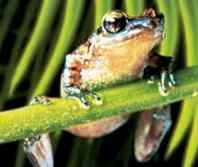
There are actually two types of frogs in Bermuda - Eleutherodactylus Johnstonei (that are widely seen and heard of) and Eleutherodactylus Gossei (which are considered extinct). They are similar and can be distinguished mainly by the sound they make. The frogs are brown in color and have long slender legs. They were introduced in late 1880s. They are actually native to Barbados and Grenada. These whistling frogs do not need stagnant water for breeding and pass through the tadpole phase within the eggs itself.
March and April are the best time to watch humpback whales in Bermuda migrating to north Atlantic. They are known for their acrobatic breaches, melodious mating songs and long flippers. An adult humpback whale could be well over 40 foot and weigh some 90,000 pounds. You can watch them from the shore or take a whale watching boat tour. Check out the link to get complete information.
The biggest of all sharks that are seen in Bermuda waters are the tiger sharks. But they generally stay far away from the shoreline and eat on other sharks, fishes, turtles and other marine creatures. Check out the link for details.
Bottlenose Dolphins
The
Dolphin Quest located in the National Museum Complex of Bermuda at the Royal Naval Dockyard is a great place to see Dolphins in action. You can also have interactive experience with dolphins here and swim with them. The center had taken up a Dolphin Tracking program in which they tagged and released six Bottlenose Dolphins. They had recorded a dive at depths greater than 2,700 feet.
These jellyfish like marine creatures have a purple blue bladder and many long tentacles. They are normally seen in the ocean feeding on small fish although sometime they get washed up the shore. Their stings can be painful and poisonous.
Caribbean Lizards
There are three types of Anole lizards that are quite common and have all been introduced to Bermuda from the Caribbean. Unlike the skinks, they have their legs well developed for climbing. They also have an expandable fan from the throat which the males use during mating time. Jamaican Anoles can grow up to 8 inches and often change colors from dark brown to greenish blue. Antiguan Anole was introduced around 1940 and is also known as Warwick Lizard. Barbados Anole accidentally arrived in Bermuda by ship in 1940s. They can be found in the western end of the island and therefore also known as Somerset Lizard. They are native to Barbados.
This brown and yellow colored bird was introduced in 1957 to control the anole lizards in Bermuda. But the Kiskadees did something different from what was expected out of them and were soon called invasive species. Check out the link to know what they did in Bermuda.
A great natural spectacle takes place over Bermuda's ocean in the dark, when the glow worms or the fire worms go in circles above the sea surface releasing green glow and brightly illuminating the area. Check out the link for details.
Rats
Rats in Bermuda come in two forms - Black Rats and Brown Rats. They are widespread in the island. They first arrived in early 1600s by visiting ships. They have always caused wide scale problems by eating crops and fruits. The early settlers tried to eliminate them in vain by burning many areas. They continued to live and relish on seeds of Bermuda Sledge, and fruits of Bermuda palmettos and Olivewood trees. They often steal the eggs of birds and known to kill the chicks of Longtails and Petrels. Barn owl is their only major predator.
Silver-Haired Bats
These migratory bats are among four other species that can be found in Bermuda. Since there is not much forest in the island, there is no resident population of these bats, but they do arrive time to time.
|
 By Raj Bhattacharya By Raj Bhattacharya
Raj, a seasoned travel writer and Bermuda destination expert, has extensive global travel experience. This website reflects his profound insights, garnered over nearly two decades of dedicated findings and research on the island. Raj has assisted countless Bermuda-bound visitors by providing direct, personalized responses to their queries and imparting his wealth of knowledge through this platform. This site serves as an indispensable guide for those seeking informed and reliable insights into Bermuda's treasures.
|
|
Visitors' Reviews and†Comments
Review and share your experience.
|
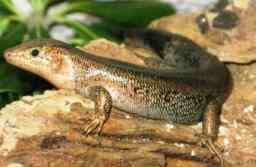
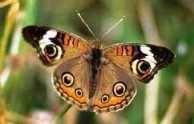
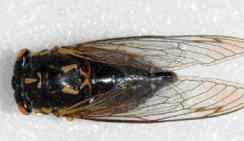
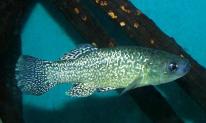
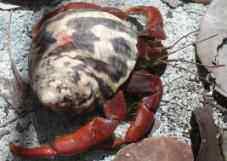
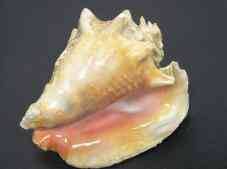
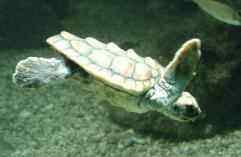
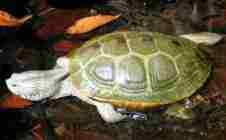
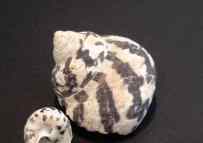
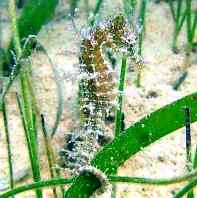

 By Raj Bhattacharya
By Raj Bhattacharya